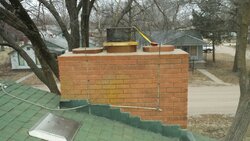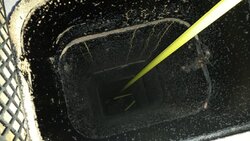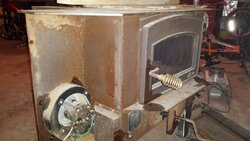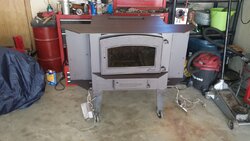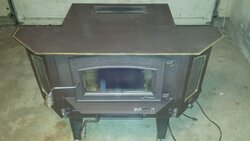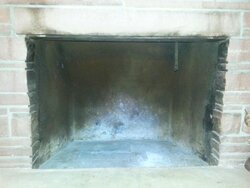I have been lurking around here for about 3 years now. I have learned a lot from the post I have read. It's taken a while for me to find the stove insert I wanted and to recondition it. I bought an older Ashley AHI1B stove insert. The current fireplace appears to be one of those steel fireboxes that the chimney and brick mantel is built around. The damper is 5 inches by 26 roughly and the flue going up is 15.5" X 11.5". So quite large and in my mind to large for the fireplace. We never really used it as it just seems like most the heat went up and out anyways. I know the chimney will need to be cleaned then lined with a 8" liner. I plan to cut a round hole through the damper and part of the metal around the damper for the liner to come through. It is an external chimney so I am going to insulate the whole flue with Perlite. So I have 2 questions.
1. Do I need a block off plate if most of my damper is still there and there is a good seal around the liner? The damper will be about 16 inches from the stove insert top.
2. This may sound like a dumb question, but currently there is a flip door in the bottom of the fireplace you can open to let the ashes drop down to an cavity that you can then clean out from the outside. So my question is when I scrape the flue, will the creosote fall down behind and past the damper then down to this clean out area. Or should there be a shelf back there? Reason I ask is if there is no shelf, I am going to have fill up that whole void and where the ashes fall with perlite as it will fall down there anyways.
Thanks,
Dennis
1. Do I need a block off plate if most of my damper is still there and there is a good seal around the liner? The damper will be about 16 inches from the stove insert top.
2. This may sound like a dumb question, but currently there is a flip door in the bottom of the fireplace you can open to let the ashes drop down to an cavity that you can then clean out from the outside. So my question is when I scrape the flue, will the creosote fall down behind and past the damper then down to this clean out area. Or should there be a shelf back there? Reason I ask is if there is no shelf, I am going to have fill up that whole void and where the ashes fall with perlite as it will fall down there anyways.
Thanks,
Dennis


